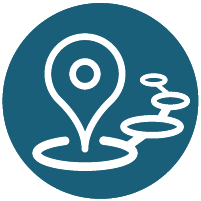Bridging Art and AI
,
HBGCC - Posters, Table 10
Session description
Outline
Outline: Bridging Art and AI: Completing Landscape Paintings
Total Duration: 90 minutes
1. Introduction (10 minutes)
Content:
Welcome and introduction to the session.
Overview of objectives and relevance of integrating AI in art education.
Engagement:
Icebreaker activity: Quick poll or chat on current use of technology in art classes.
Brief discussion on participants' experiences with AI.
2. Overview of AI in Education (15 minutes)
Content:
Introduction to AI tools and their potential benefits in education.
Examples of AI applications in art education.
Engagement:
Presentation with slides showcasing AI tools and examples.
Q&A to address initial questions and gather participant perspectives.
3. Hands-On Activity: Exploring AI Tools (20 minutes)
Content:
Demonstration of an AI art generator.
Step-by-step instructions on how to use the tool.
Engagement:
Participants use AI tools to complete a sample artwork.
Peer-to-peer interaction: Share results and discuss experiences.
Process:
Frequent check-ins and assistance as needed.
4. Designing AI-Enhanced Projects (20 minutes)
Content:
How to design and implement project-based learning activities using AI.
Examples of project ideas and lesson plans.
Engagement:
Group activity: Participants brainstorm and outline their own AI-enhanced art projects.
Group discussions to share ideas and receive feedback.
Process:
Small group work with intermittent facilitation and feedback.
5. Practical Application and Resources (15 minutes)
Content:
Introduction to the provided lesson plans, rubric, and PowerPoint presentation.
How to adapt these resources for different classroom contexts.
Engagement:
Walkthrough of the resources and Q&A on application.
Discussion on customizing resources to fit specific needs.
6. Reflection and Collaboration (10 minutes)
Content:
Reflection on key takeaways and how to apply new insights.
Sharing of experiences and strategies among participants.
Engagement:
Reflection activity: Write down one key insight and how they plan to use it.
Group discussion on integrating AI into their own practice.
7. Conclusion and Q&A (5 minutes)
Content:
Summary of the session and final thoughts.
Additional resources and next steps.
Engagement:
Open floor for final questions and feedback.
Provide contact information for follow-up support.
Supporting research
"Artificial Intelligence in Education: Promises and Implications for Teaching and Learning" by Wayne Holmes, Maya Bialik, and Charles Fadel. This book provides insights into how AI can be integrated into educational practices and its potential impacts.
"The AI Classroom: The Ultimate Guide to Artificial Intelligence in Education" by Daniel R. Liddell. This book explores practical ways to implement AI in classrooms and its benefits for students.
"Artificial Intelligence in Education: The Future of Learning" published in Educational Technology Magazine. This article discusses current trends and future possibilities for AI in education.
"How Artificial Intelligence Is Transforming Education" from EdTech Magazine. This article highlights real-world applications of AI in educational settings and its impact on teaching and learning.International Society for Technology in Education (ISTE) - ISTE Standards for Educators: Provides a framework for integrating technology, including AI, into teaching practices.
Presenters

Session specifications
Topic:
Grade level:
Audience:
Attendee devices:
Participant accounts, software and other materials:
Adobe Express: Ensure that Adobe Express is downloaded and installed on your device. Download Adobe Express
Equipment/Materials:
MacBook Air or Laptop: Bring a laptop with internet access to participate in hands-on activities and interact with the AI tools.
Headphones: Recommended for better audio quality during any multimedia presentations or activities.
Notebook and Pen: For taking notes and engaging in brainstorming activities.
Subject area:
ISTE Standards:
Collaborator
- Collaborate and co-learn with students to discover and use new digital resources and diagnose and troubleshoot technology issues.
Computational Thinker
- Understand how automation works and use algorithmic thinking to develop a sequence of steps to create and test automated solutions.
- Create original works or responsibly repurpose or remix digital resources into new creations.

 Back
Back Trips and Tours
Trips and Tours